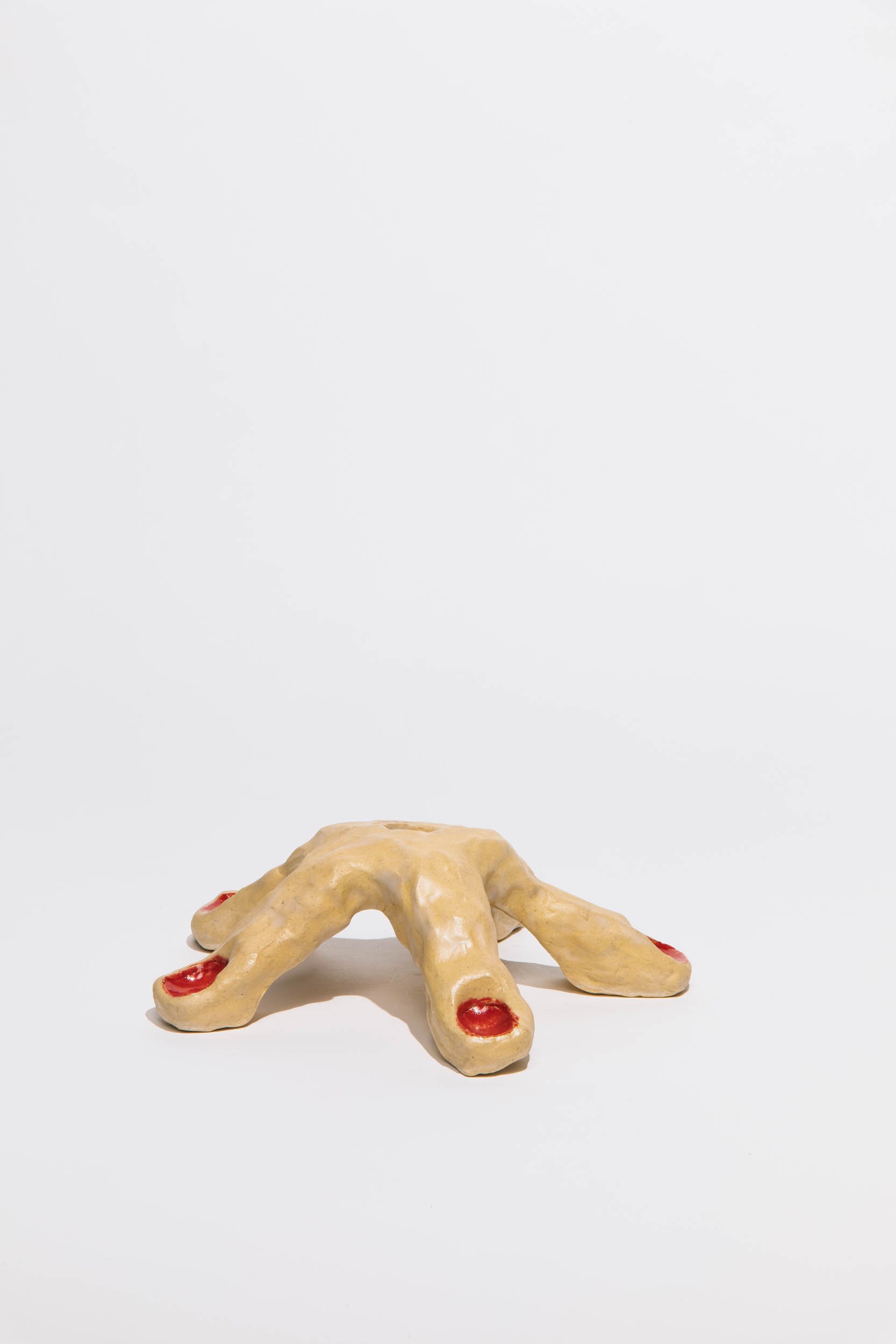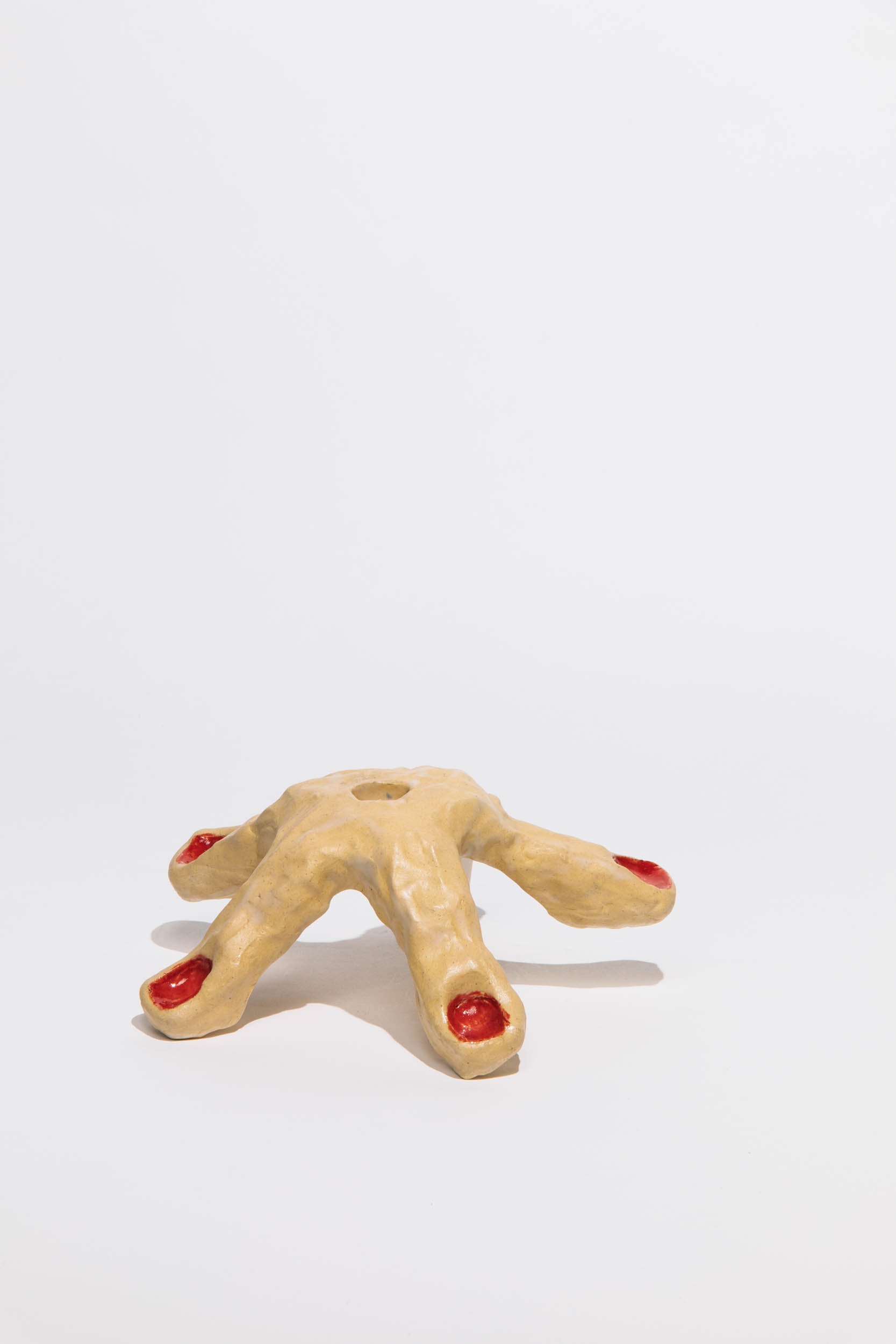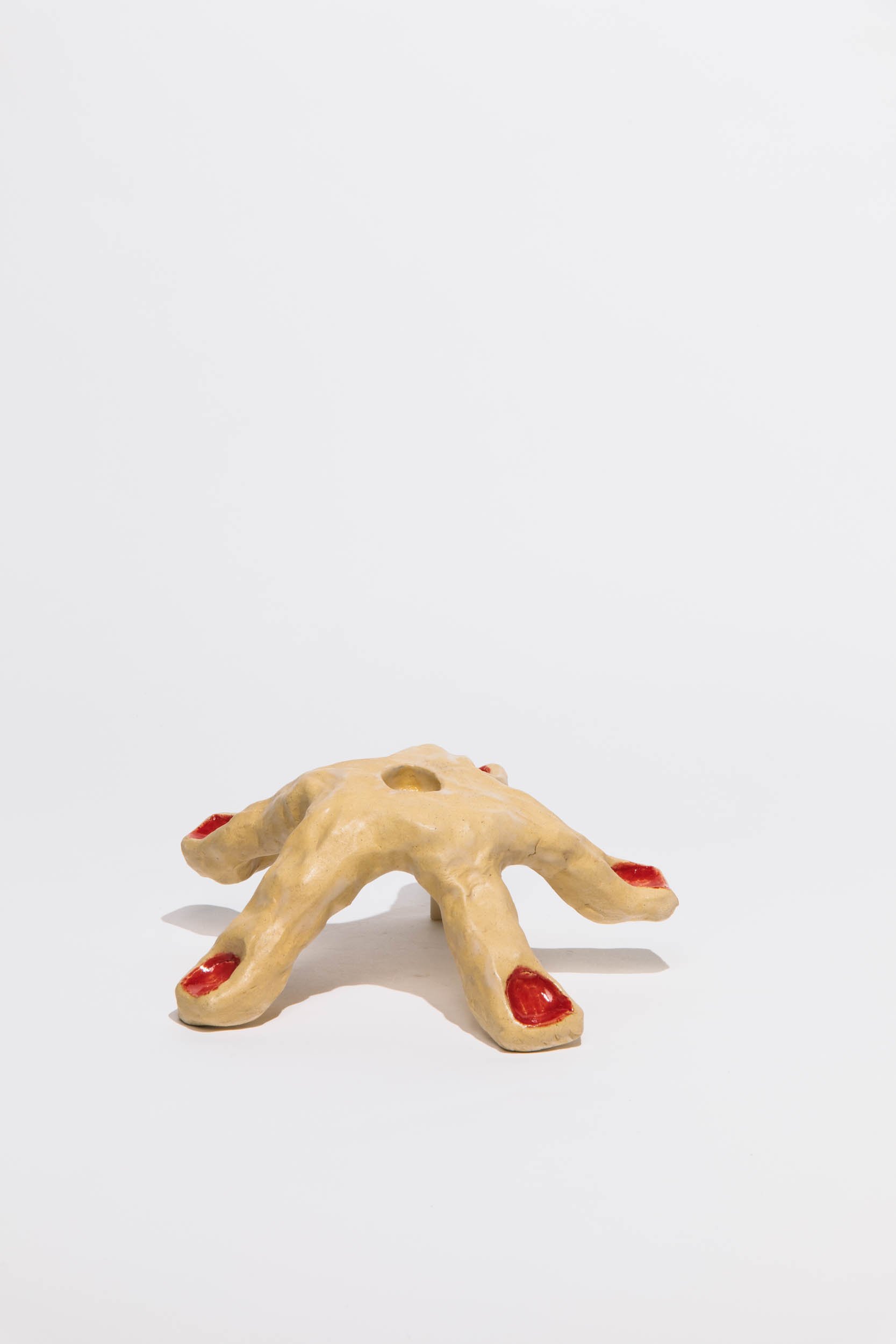Anna Riess, 'Nailed it red', ceramic object, 2023



Anna Riess, 'Nailed it red', ceramic object, 2023
This hand-formed clay piece, finished with playful red-painted nails, is both functional and symbolic. Whether holding a candle or standing alone, it invites pause—offering a moment of reflection on the role of the hand as both object and agent. For Anna Riess, hands are not only her most vital tools in the sculptural process, but also a recurring symbol in her artistic language. They gesture toward themes of labor, femininity, intimacy, and resilience.
In Nailed it red (2023), the hand becomes a site of transformation—simultaneously humorous and sincere. With its outstretched fingers, the form evokes both offering and assertion. The glossy finish elevates the handmade, while the bright nail polish adds a playful, assertive touch, linking beauty and strength. Through clay and glaze, Riess emphasizes the tactile and the personal: the hand as a symbol of care, creativity, and control. Each fingerprint and curve speaks of touch—both the artist’s and our own.
Her ongoing use of hands in ceramics celebrates imperfection, craft, and bodily presence. By forming the hand by hand as a sculptural protagonist, Riess invites viewers to consider not just what hands do—but what they signify.
Anna Riess is a multidisciplinary artist and cultural anthropologist based in Vienna. Her work explores themes of embodiment, emotion, and interbodily relations through materials like clay, metal, and textiles. Deeply influenced by her experience of motherhood, she transforms everyday objects into symbolic forms - one of her gestures she describes as the “nippelization of the everyday.”
Riess is the co-founder of the Clayground retreat and the creator of Circle of Clay, a workshop series she has led at institutions such as the Museum of Applied Arts in Vienna or the Hotel Kai36 in Graz. Her workshops invite participants—regardless of prior experience—to develop their own sculptural language through hands-on engagement with clay.
Her sculptural objects possess a strong visual identity and tactile presence, marked by a recognizable aesthetic and a willingness to push the boundaries of material behavior. Especially drawn to the tactility of clay, Riess explores how movement and fluidity can be captured in form—leaving the trace of the hand visible in its hardened state. With a strong interest in local materials and interdisciplinary exchange, her practice bridges artistic, social, and ecological concerns in both conceptual and applied ways.